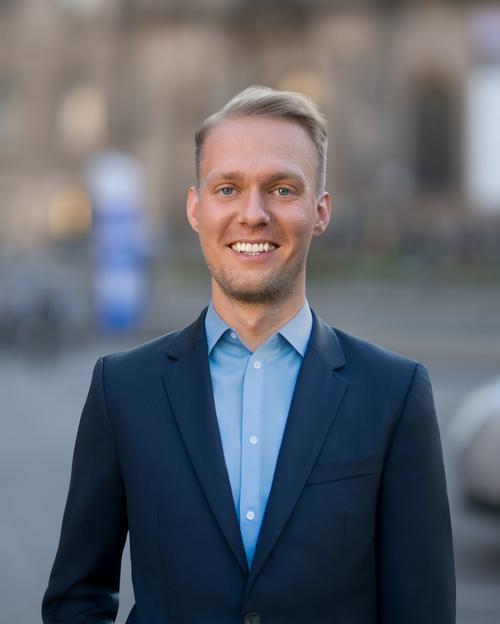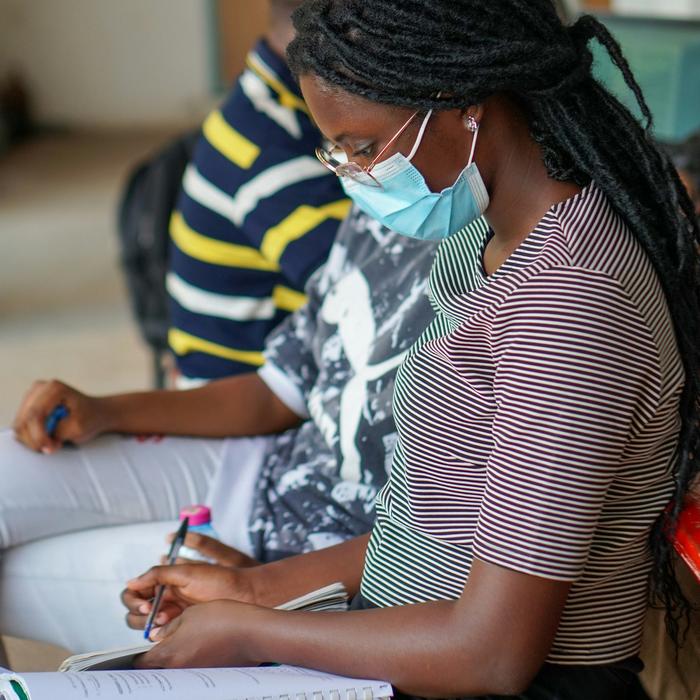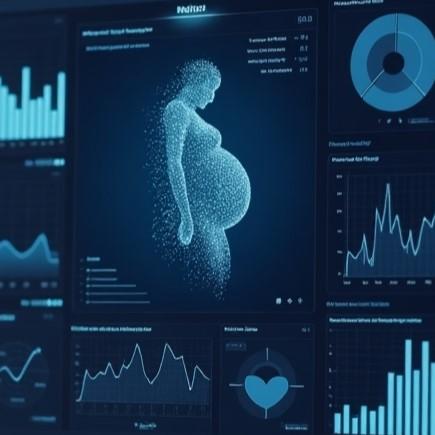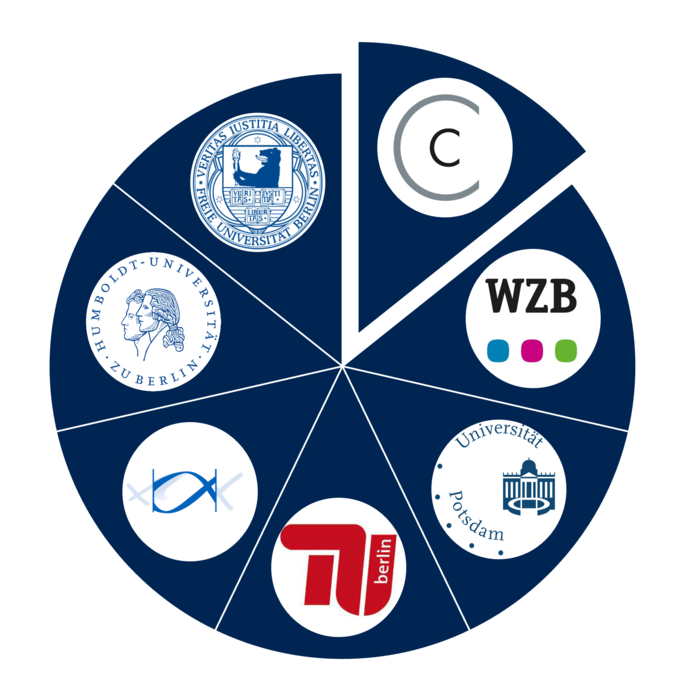Artificial intelligence: From technological innovation to life-saving practice
Nico Marquardt is one of the five winners of our “Art Meets Science” ideas competition. He won in the Global Health category—one of the greatest challenges of our time.
Nico Marquardt is conducting research at Charité Berlin on AI solutions for safe births worldwide.
Every day, more than 700 women worldwide die from preventable complications during pregnancy and childbirth, especially in low- and middle-income countries. That equates to more than 260,000 deaths per year. Many of these deaths could be prevented through early risk assessment, faster diagnosis, and more targeted care. In his doctoral project “From Pilot to Practice,” Nico Marquardt is investigating how artificial intelligence (AI) can be used in countries with limited resources to reduce maternal mortality.
The aim of the project is to enable early diagnosis and targeted interventions in order to save lives. Nicos' research is thus contributing to a global reduction in maternal mortality rates and ensuring that technological innovations have the maximum possible impact on society.
The project comprises three phases: First, a systematic survey of current AI applications for reducing maternal mortality will be conducted. In the second step, Nico will conduct qualitative interviews in Ghana with medical staff, patients, and other stakeholders to understand the acceptance and challenges of AI in the healthcare sector. Finally, a practice-oriented model will be developed that shows how AI can be sustainably integrated into national healthcare systems.
Nico is part of the interdisciplinary PhD program Global Health—a joint program of seven scientific institutions—and is supervised by Prof. Dr. Lothar Wieler (Hasso Plattner Institute, University of Potsdam), Prof. Dr. Tobias Kurth (Institute for Public Health, Charité), and Prof. Dr. Philipp Bouteiller (XU University).
A futuristic AI observatory in the heart of Berlin—a visual interpretation of Nico Marquardt's research. The motif will be displayed on posters throughout Berlin as part of the BUA's OPEN LAB campaign. | Artist: Liam Schnell
Dear Nico, congratulations on winning the BUA ideas competition in the field of global health. What are your hopes for our competition?
By participating in this competition, I would like to contribute to raising public awareness of one of the central goals of Agenda 2030: reducing maternal mortality. Combining science and art opens up new ways of highlighting global inequalities and initiating processes of social change.
What can be seen on the poster motif that you developed together with 3D artist Liam Schnell?
The motif shows a futuristic AI observatory in the middle of Berlin—a visionary fusion of urban space, medical imagery, and the digital future.
At its heart is an AI-supported system that uses a variety of sensors and data points to record and evaluate the status of pregnancy. Embedded within it is an abstract ultrasound image, framed by glowing data veins that run across the building's facade like digital nerve pathways. A spiral of light and technology emerges from it – half telescope, half flower structure – and poses a question to the world: How can AI help save lives? The image shows what often remains invisible – the hope for safe childbirth, technological precision, and global responsibility in the age of artificial intelligence.
What role can art play in science communication?
Art can make complex content emotionally accessible and open up new approaches. In my academic work to date, I have primarily relied on traditional channels of communication. I am therefore all the more delighted that “Art Meets Science” is opening up a new, creative dimension of science communication.
How can artificial intelligence help save mothers' lives?
AI has the potential to save lives by using available health data—such as routine examinations or basic parameters—to identify high-risk pregnancies at an early stage, especially in areas where specialized diagnostics or further tests are not available. Machine learning models could thus help to identify life-threatening complications such as postpartum hemorrhage (PPH), eclampsia, or postpartum infections at an early stage and initiate targeted measures on site more quickly.
You conduct research in Ghana, a country with limited resources. What challenges do you face there when introducing new technologies?
A lack of digital infrastructure, fragmented healthcare systems, and limited financial and human resources make the sustainable implementation of AI technologies considerably more difficult. Added to this are ethical implications—in particular, issues of data protection, data sovereignty, and cultural acceptance of new technologies.
Although more than 400 AI applications have been developed worldwide in the field of maternal health, only a few of them ever reach the stage of being ready for use in the real healthcare system.
How can this be changed?
By involving key stakeholders—including healthcare professionals, patients, and policymakers—my project focuses on the voices of local people. The aim is to ensure that technological innovations are not only efficient, but also context-specific, socially acceptable, and sustainably integrated into existing healthcare systems.
In your project, you talk to medical staff and patients – what do they think of AI?
Many healthcare professionals see AI as an enormous support – especially in regions where human resources are scarce and the nearest doctor is many hours away. At the same time, there are reservations: How reliable is AI? How is patient data protected? It is clear that acceptance does not come from technology alone, but from transparency, explainability, and the consistent involvement of those affected.
Global health is one of the Grand Challenges of the Berlin University Alliance. Why are global health issues among the greatest challenges of our time?
Health is global—but access to healthcare is far from it. Global health issues are questions of justice, solidarity, and sustainability. They determine whether technological and medical innovations truly benefit everyone or further exacerbate existing inequalities.
You are conducting research as part of the interdisciplinary PhD program Global Health—a joint program involving seven scientific institutions. Tell us more about it!
The new PhD program in Global Health brings together the expertise of several leading institutions such as Charité, Humboldt University, Freie Universität, Technische Universität, the University of Potsdam, and the Robert Koch Institute. This broad alliance makes it possible to explore global health issues from a wide range of scientific perspectives—from public health to medicine and computer science to social sciences and ethics.
In addition, the doctoral students themselves contribute to this diversity with their international backgrounds and experiences. Many of us already have practical experience from international organizations such as the WHO or from field research. This lived globality enriches the program with valuable perspectives.
The proximity to leading research institutions and political decision-makers creates a very dynamic environment that promotes the translational implementation of findings into concrete improvements in global health systems—an approach that also significantly shapes my PhD.
Dear Nico, thank you for the interview!





